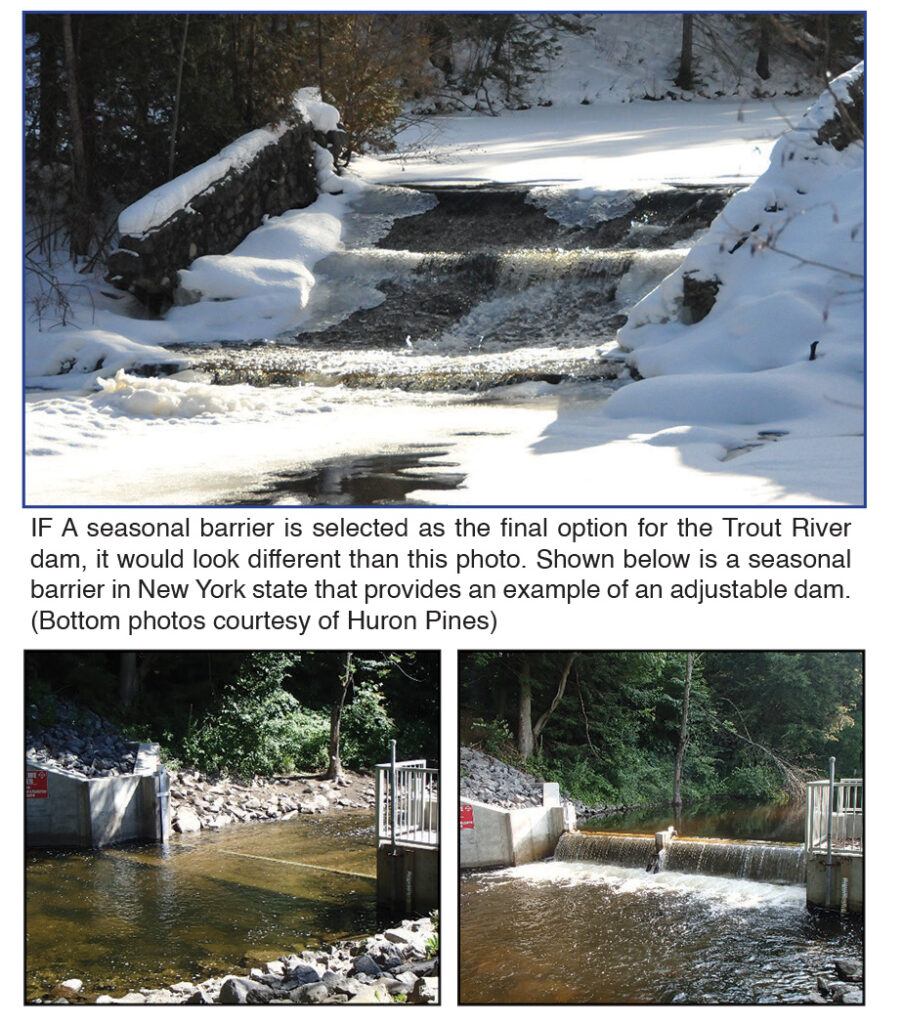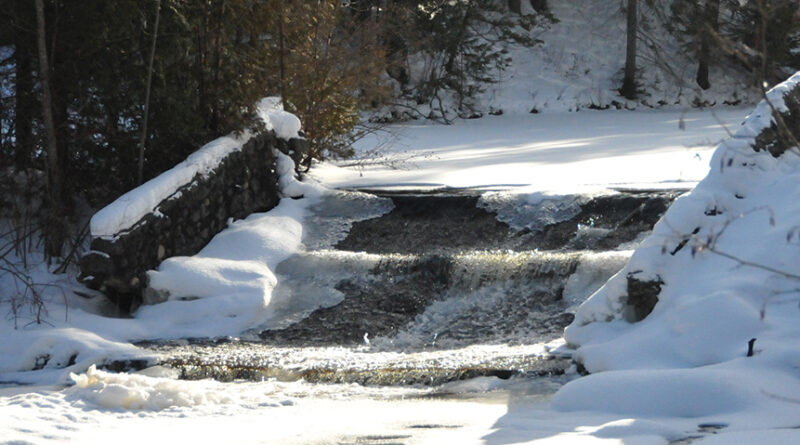Options presented to fix or replace Trout River Dam
by Peter Jakey–Managing Editor
There was an information packed presentation on what the future may have instore for the Trout River dam at the Herman Vogler Recreation Area (HVRA).
Amy Nowakowski, coastal project manager for Alpena-based Huron Pines appeared at last Friday’s TEAM Rogers City in person, along with Randall Claramunt, Michigan Department of Fisheries, Lake Huron basin coordinator, who spoke remotely.
Rogers City mayor Scott McLennan said the aim of the presentations was to provide as much information as possible about a replacement plan for the dam.
“When you don’t provide good, clear, straightforward information, people will fill in the blanks, right? We see that happen all of the time,” said McLennan. “And they don’t always fill it in with the right information.”
The dam is in the middle of the 270-acre property owned by the Presque Isle Conservation District (PICD).

It is a favored spot among locals and tourists based just on the historic aesthetics of the structure, but it’s not the only aspect that brings people out to HVRA.
“People go here to fish, hike, ski in the wintertime and spend time along the river,” said Nowakowski
It’s also a place filled family memories as many graduation and wedding photos have been taken there over the years with the dam in the background.
“It’s pretty awesome,” said McLennan. “If we all work together as community partners, we can have this beautiful area for many generations to come.”
The dam was constructed in the 1940s, according to Nowakowski.
“In the most recent formal inspection, it notified that the dam had some structural repairs that were needed, and it is where the conversation started about a potential project at this location,” said Nowakowski.
The dam serves as a first barrier to invasive sea lamprey migration, she said.
“But at the same time it also blocks native and desirable fish such as trout and salmon,” said Nowakowski. “The overall goal is to improve the health of the watershed for people, the fish, for the river, while at the same time preventing the expansion of sea lamprey.”
The four options presented during the Huron Pines PowerPoint was take no action; make repairs that would be considered temporary; replace the structure in similar size and function; “and a fourth option, which may be new to some people in this room is termed a seasonal fish passage barrier. What that really means is an adjustable dam that can be raised and lowered, and it provides a lot of management flexibility for the site.”
Claramunt said there a lot of dams in Michigan that serve multiple purposes, but some are 50 to 90 years old.
“And are in need of replacement and repair,” he said, starting his presentation via Zoom. “This is a conversation we are having all across different projects, in different areas.”
Early scoping meetings with PICD that goes back to 2019, included maintenance, funding and other issues.
“Seemed like there were people on both sides of the issue and the seasonal barrier came out of those discussions, and that really led us to, could this work, and would we be able to get the funding necessary to do the feasibility studies and to look at the most advantageous option moving forward,” said Claramunt.
However, the project has received a commitment from both the Walters Family Foundation for $20,000, and also the Great Lakes Fisheries Commission in the amount of $500,000.
“With this funding provided, we can start to do the feasibility study, to look at the options,” said Claramunt. “We are still seeking additional funding to cover things like engineering and design work, that would be the next phase.”
Former Rogers City mayor Beach Hall commented on the build-up sediment in the pond behind the dam.
“If you open up the dam, what happens to the sediment?” Hall asked. “How many years until it turns into a swamp? Not very many I don’t think.”
“Those are things we have been asking also,” said Nowakowski. “That would be incorporated into a feasibility study.” She did say that Huron Pines has used sediment traps to prevent the material from going downstream.
Claramunt added that a seasonal barrier can provide for more control of sediment.
There were additional questions about sediment affecting the quality of the water and how opening up the dam could affect fish habitat.
Nowakowski reiterated that the feasibility study would “encompass everything.”
“One of things that has been big on my radar screen, and it was prompted especially by the dam failures in Midland, was this idea that we have a lot of old degraded structures in the state of Michigan and some of them are going to cause a significant public threat and issues,” said Claramunt.
There is a l
“That, alone to me, is enough, the operational plan could be leave the boards in 12 months out of the year, unless another need is identified, and every five years have the capacity to do a controlled draw down for inspections,” said Claramunt. With the budget of PICD being limited, low-cost maintenance would be desirable.
Nowakowski said community input will be welcomed at every stage of the proposed project.

